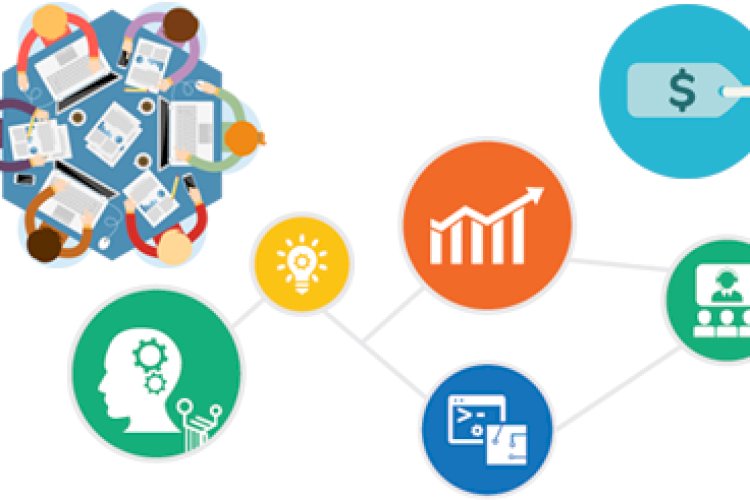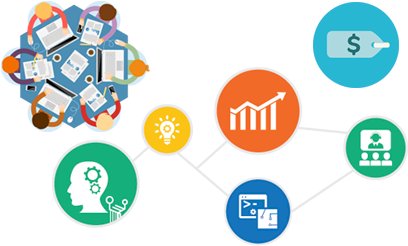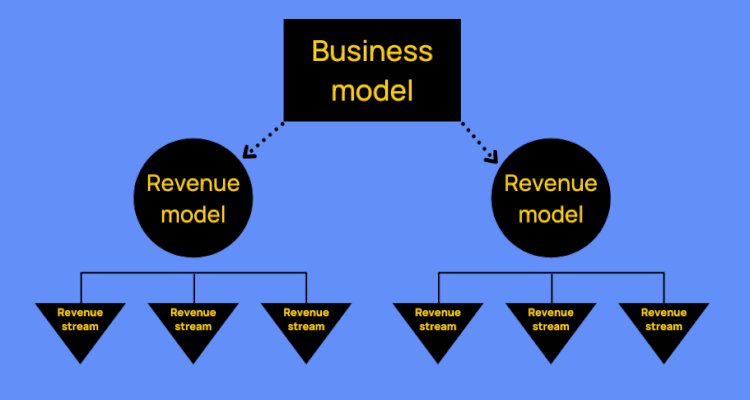One of the most critical decisions you’ll make is selecting a revenue model.
It will have an impact on how you set up, operate, and grow your company. However, choosing the best income model can be difficult because there are so many possibilities, each with its own set of benefits and drawbacks.
We’ll go through several prominent revenue models utilised by some of the world’s most successful and rapidly growing businesses in this article. Finally, you’ll have all the information you require to select the best option for your company.
What is a Revenue Model?
A revenue model describes how a business earns money.
What’s the Difference Between a Revenue Model, a Revenue Stream, and a Business Model?
The phrases revenue model, revenue stream, and business model are sometimes used interchangeably. They are not, however, the same.
Unfortunately, there is a lot of ambiguous and conflicting information on the internet about the differences between them. So, in order to avoid more confusion, here’s a quick way to tell the difference between the three:
-
Business Model: What does your business do, who does it serve, and how do you create value for your customers?
-
Revenue Model: How does your business make money?
-
Revenue Stream: Where does your money come from?
Consider it a hierarchy. Your company concept is at the very top of the list. Your revenue model is hidden beneath that. Your revenue streams are listed at the bottom.
For your startup, there are six different revenue models to consider:
-
Subscription Revenue Model
How it works is as follows: Recurring subscriptions are how you make money (typically monthly, quarterly, bi-annually, or annually).
Pros:
-
Recurrent revenue that is predictable and constant (monthly recurring revenue!).
-
Scalable and adaptable
Cons:
-
Customer retention requires just as much (if not more) investment than acquisition.
-
Because of its popularity, there is a lot of competition.
Hubspot and Netflix are an example of a company that makes money through subscriptions.
Over the last decade, the subscription revenue model has grown in popularity as more businesses see the benefits of recurring revenue.
Despite the recent influx of new businesses adopting this strategy, it has a long history. Consider country clubs and gym memberships. To use the services of these establishments, you must pay a recurring cost.
Dollar Shave Club, Birchbox, and BarkBox are three subscription boxes/e-commerce companies.
Asana and Salesforce are examples of software/SaaS.
Hotstar, voot, amazon prime are some examples of media.
Predictable revenue is one of the major advantages of the subscription model. It’s easier to anticipate revenue and create financial projections when clients pay you the same amount every month (and more accurate).
Furthermore, even if you aren’t attracting a lot of new clients, you can increase income by upselling or cross-selling current customers.
-
Transactional Revenue Model
You generate money by selling a single or numerous things.
Pros:
-
Ease of sale
-
You may rinse and repeat once you’ve found a lucrative acquisition route.
-
You can select from a large number of goods.
Cons:
-
Scaling up can be challenging and costly.
-
Time and money are spent testing acquisition channels.
-
Inventory management and return processing can be time-consuming.
Flipkart is an example of a company that uses a transactional revenue model.
There are three main approaches to this model:
-
You buy the product from one person/company and resell it to another for a higher price
-
You manufacture the product and sell it to a retailer, who then sells it to the end consumer
-
You manufacture the product and sell it directly to the consumer (DTC)
-
Service-Based Revenue Model
It works like this: You earn money by selling your time, skills, and/or labour for a defined price.
Pros:
-
Low start-up costs
-
Profit margins that are high
-
It’s easy to get started
Cons:
-
Scaling can be difficult.
-
It’s a very hands-on experience.
-
To increase income, you must consistently attract and retain clients.
Service-based revenue models are used by the following companies:
Wipro, TCS and more
One of the oldest revenue models on our list is the service-based revenue model. People have been exchanging services in some form or another for as long as they have existed.
-
Advertising Revenue Model
It works like this: You generate money by selling ad space to people who are interested.
Pros:
-
The more in-demand your audience is, the more money you make.
-
Businesses are continuously looking for new places to advertise, so it’s a very sustainable business model.
Cons:
-
You must first establish a targeted audience.
-
The quality of your audience determines your long-term success.
-
Advertisers will stop buying ad space if they don’t get a return on their investment).
Spotify, Facebook is an example of a company that makes money from advertising.
If you’ve ever seen a business that generates a lot of money but doesn’t sell anything to its customers, it’s possible they’re using an advertising income model.
Many Facebook users had no idea what product Facebook was selling for a long time. They eventually recognised they (the users) were the thing that Facebook was selling. In other words, Facebook is selling the users’ attention.
The advertising revenue plan is as follows:
-
Build an audience
-
Learn about who your audience is. This can be their demographics, interests, or buying habits.
-
Find advertisers who want to reach your audience
-
Offer them exposure to your audience for a set price
Such large advertising platforms have been created by social media sites such as Facebook, Twitter, and LinkedIn. They gather hundreds, if not thousands, of data points on its users, which they utilise to allow advertisers to target adverts with more precision.
This revenue model may be perfect for you if you want to create a business with a large audience–or a smaller specialised audience.
-
Commission Revenue Model
How it works: You earn money by recommending items and services and receiving a commission for each reference that is successful.
Pros:
-
You won’t have to keep inventory or sell anything.
-
It can become somewhat inactive after a while.
Cons:
-
It necessitates the presence of an audience.
-
To optimise your commission rate, you must negotiate.
Companies that make money from commissions include Paytm, FreeCharge, and Urbanclap
If you know how to create a buyer-ready audience, this revenue model works well. To put it another way, you’re not just trying to attract a wide audience. You must develop an audience that will purchase the products or services you promote. Otherwise, you won’t be able to make any money.
-
Donation Revenue Model
The way it works is that you earn money by accepting donations.
Pros:
-
Making your product/service available for free makes it easier to attract customers
Cons:
-
It’s difficult to persuade people to pay money for something you’re giving them for free.
-
Your income is based on people’s charity, which makes it extremely volatile.
-
Making a profit is quite challenging.
Wikipedia is an example of a company that makes money from donations.
The majority of businesses that operate on a donation or “pay what you want” revenue model support a social cause. These firms normally exist for a reason other than producing money, whether it’s providing access to knowledge, medical services, or any other type of social good.
In truth, only a small percentage of businesses make a profit. The majority of the donations fund their operating costs. That isn’t always sufficient.
Nonprofits are not the only ones who adopt this revenue model. This income model is also used by the ad blocking plugin Adblock. They offer their plugin for free and ask for donations to help them continue to develop it. A paid version of the plugin is also available, which generates some additional cash.
Other Revenue Models to Consider
These are some of the most common revenue models, but this is by no means a comprehensive list. Here are some alternative revenue models to think about:
-
Interest-based revenue model: You earn money by charging interest on money you borrow. Banks and other financial institutions use it.
-
Renting/leasing revenue model: You earn money by renting out your home for a set length of time.
-
Licensing revenue model: You earn money by granting someone the right to use your intellectual property for a set amount of time and for a specific use case.



